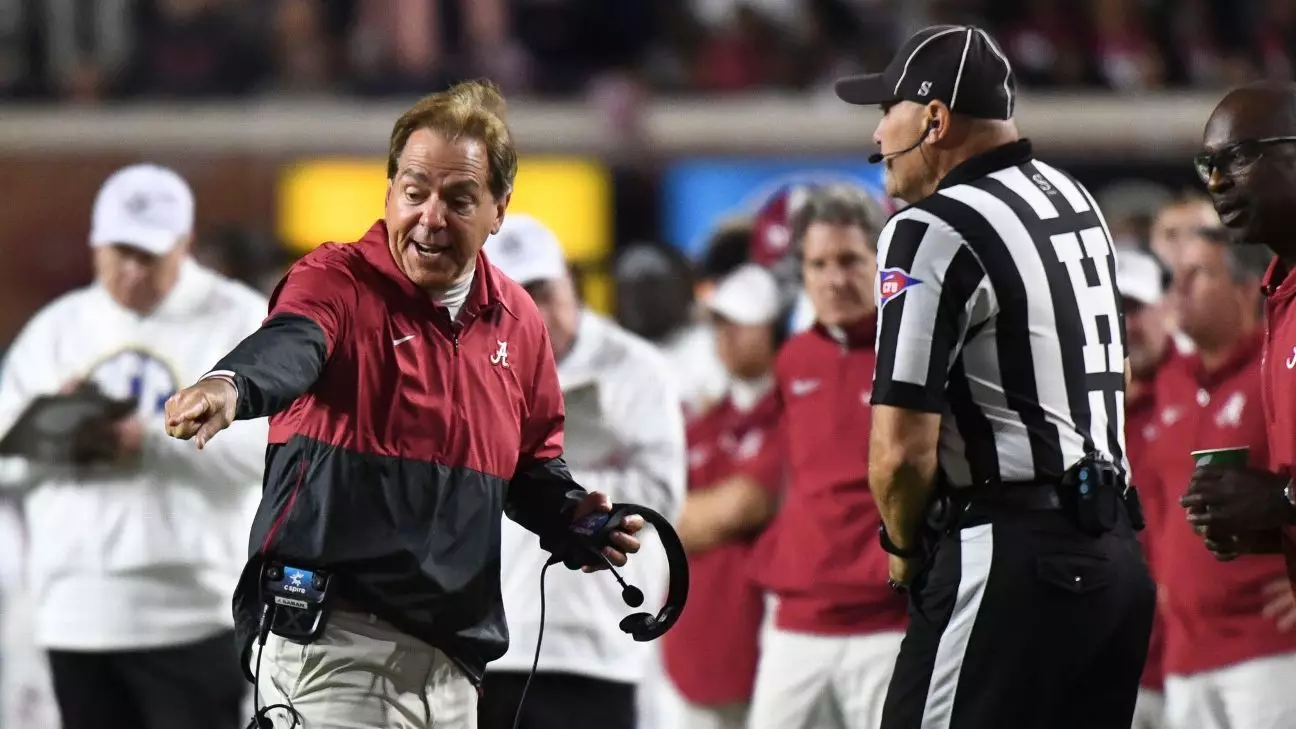The college football playoff rankings have been consistent throughout the season, with minimal changes among the top-ranked teams. However, one glaring anomaly stands out – Ohio State’s seemingly inflated ranking. Despite having only three top-35 wins and six wins against bowl-eligible opponents, the Buckeyes have managed to secure a spot ahead of teams with better records and more impressive victories. It raises the question – is Ohio State truly deserving of their position, or is the committee playing favorites?
Ohio State’s strength of record is undeniably impressive, but upon closer examination, doubts start to surface. While wins against Notre Dame and Penn State may appear significant on the surface, they lose some luster when considering the circumstances. Notre Dame suffered a humiliating defeat against Louisville and also lost to a struggling Clemson team. Penn State, on the other hand, failed to showcase its prowess by narrowly defeating less formidable opponents. Are these really the quality wins that the committee believes justify Ohio State’s ranking?
On the other end of the spectrum, the committee’s decision to rank Oregon ahead of several teams with superior resumes is equally perplexing. Despite Oregon’s lackluster resume and previous loss to Washington, the Ducks have the opportunity to erase their shortcomings in the Pac-12 title game. This double standard raises concerns about the fairness and integrity of the ranking process. When the playoff expands to include 12 teams, these issues will become even more complex and contentious.
While Washington has avoided being snubbed in the rankings, their win-and-in situation leaves room for dissatisfaction. Having already defeated Oregon and possessing two additional Quad 1 wins, the Huskies should not find themselves in a precarious position. The conference championship games, designed to generate revenue, have inadvertently diminished the significance of regular-season achievements. If the playoff expands, these games will only exacerbate the existing problems and potentially unjustly eliminate deserving teams from contention.
Another glaring oversight in the rankings is the positioning of Oklahoma. Despite having more victories against Quad 1 opponents than Mississippi and Missouri, the Sooners find themselves trailing behind. The implications of this oversight are immense, as it impacts the team’s chances of securing a spot in a prestigious New Year’s Six bowl game. The discrepancy between various ranking systems further highlights the inadequacies of the committee’s evaluation process.
The committee’s disregard for teams such as Tulane and Liberty is evident in their lower rankings. Tulane, with only one loss to a highly ranked opponent, seems unfairly placed at No. 22. Meanwhile, less impressive teams such as Tennessee secure higher positions despite lackluster performances. This inconsistency in evaluating non-Power 5 teams devalues their achievements and perpetuates the significant disadvantage they face in garnering recognition.
The absence of substantial upsets throughout the season has stifled the excitement and fervor surrounding the playoff rankings. The predictability and lack of controversial decisions from the committee have robbed fans of passionate debates and compelling arguments. Without a genuine challenge to the established order, the ranking process appears meaningless, reducing the significance of the entire college football season.
As we look forward to championship weekend, we can only hope for a sprinkle of chaos and unpredictability to reinvigorate discussions. Only with a few upsets and surprising outcomes can we demand the committee to delve into the intricacies, navigate through logical paradoxes, and truly put their decision-making skills to the test. After all, the essence of the rankings lies not in the rankings themselves, but in the debates and controversies that surround them.
The committee’s rankings this season have raised several eyebrows and sparked widespread criticism. The questionable positioning of teams like Ohio State, the inconsistent treatment of Washington and Oregon, and the undervaluation of teams outside the Power 5 conferences have all contributed to the skepticism surrounding the committee’s decision-making process. As fans eagerly anticipate championship weekend, they hope for upheaval that will force the committee to justify their choices and shed light on the method, or perhaps the madness, behind the rankings.


Leave a Reply